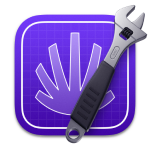

|
Swift Stories |
View in web browser |
](https://tuist.dev/marketing/images/newsletter/issues/7/artwork.jpg)
Featured work: Ali Husni
|
#7 - Apr 4, 2025 Apple’s native edge: fading or evolving?Welcome to issue 7!Apple has long been celebrated for its seamless fusion of software and hardware. Their tools and frameworks empower developers to craft apps that feel like natural extensions of the platform—a level of integration that the web and Linux have struggled to match. Why? Because those platforms lean on a common interface, sacrificing the deep, native symbiosis Apple mastered. The web, though, carved its own path. It built a universal interface, but its capabilities lagged behind native offerings. We saw this gap spawn a wave of extensions—companion features shipped alongside apps. Some thrived; others floundered. Yet they all hit the same wall: discoverability. Shifting users from a single tap to a new window or interface proved a tough sell. Then the web flipped the script. Rooted in standards and collaboration, it became the ultimate stage for humanity’s primal need to connect. Enter Slack, Figma, Notion—tools where real-time collaboration trumped native polish. Native apps scrambled to catch up, but they couldn’t quite crack it. Why? The web’s universal platform and evolving languages let developers iterate fast without breaking existing apps. That reliability drew organizations in, sparking innovation at breakneck speed. Apple’s once-unassailable software-hardware marriage isn’t the draw it used to be. Sure, some apps still thrive on tight integration and raw platform access, but the shine’s wearing off. Apple’s push into new frontiers like visionOS—where the web can’t follow—hasn’t ignited as hoped. And the horizon looks murkier still. The LLM revolution is here, hinting at a future where language, not taps or clicks, becomes our tech interface. Picture it: no more windows, buttons, or tabs—just natural conversation. In that world, a chat becomes the gateway to technology. Where does an app fit? Or the App Store? If LLM-powered chats (think ChatGPT or Claude) can talk to the world via standard web protocols like MCP over HTTP or Standard Pipelines, why bother installing anything? Could these AI models double as app stores, with the OS reduced to context for the conversation? A few issues back, we said forking is pricey. Apple’s divergence from the web is starting to sting, challenging their core models. Apps and new platforms like visionOS still have a shot, but the real action’s brewing outside their ecosystem. Apple needs an answer—fast. Will WWDC deliver? They’ve got the resources to pull it off, no question. But do they have the vision? June will tell. Tools & sites
Worthy Five: Julia NikitinaJulia Nikitina is a Berlin-based iOS developer and SwiftUI enthusiast. Passionate about performance, she enjoys sharing her expertise through meetups and teaching mobile development. When not coding, she's woodworking or attending barista classes.
Food for thought
|